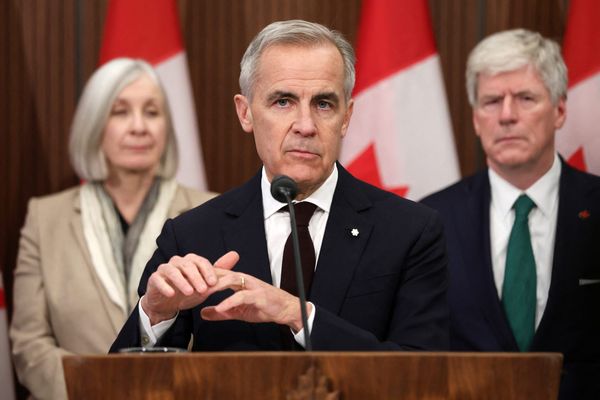
Rising fuel prices raise temperatures at No 1 The Terrace, and raise eyebrows further up the road at the Commerce Commission
The much anticipated Pre-election Economic and Fiscal Update set to be released tomorrow is expected to show a weaker activity outlook overall due to deteriorating export prices and a weaker-than-expected starting point for gross domestic product.
The report will further sharpen the focus on New Zealand’s economic outlook in the lead up to next month’s general election and comes at a time of growing unease as fears mount about the potential for a deeper recession taking hold.
Elevated interest rates, rising fuel prices, falling commodity prices and slowing consumer demand are all taking their toll on an economy increasingly under pressure.
READ MORE: * IMF report a timely wake-up call for NZ Inc in election countdown * Red Bands in the black but, above the line, Fonterra puts farmers in red ink
However, a small glimmer of good news for the agriculture sector and the wider economy saw dairy prices end a four-month slide in the latest Global Dairy Trade auction. Prices overall increased by 2.7 percent, following a 7.4 percent decline at the last auction in mid-August.
Whole milk powder prices firmed 5.3 percent to US$2,702 a tonne after falling almost 11 percent to a five-year low last month.
Meanwhile, the latest terms of trade data held up better than expected lifting 0.4 percent in the June quarter, though price movements since then are likely to mean the figure for the September quarter comes in much weaker.
ASB Bank, which had forecast a fall of up to 3 percent, is sceptical the current resilience in export prices will be sustained. The ASB Commodities Index, which is calculated based on more timely weekly data, showed that both global meat and dairy prices have continued to trend lower, with its meat price index down about 7 percent since March and its dairy price index down as much as 20 percent over the same period.
Backing up its view, the ANZ World Commodity Price Index also fell for the third consecutive month, easing 2.9 percent in August and led by an 8.7 percent fall in dairy prices. On the plus side however, ANZ said global shipping prices continued to ease and horticulture lifted with strong returns from kiwifruit, though wool prices fell to a 10-month low.
In terms of imports, a decelerating domestic economy weighed on import demand, with volumes flat or down for many key categories during the quarter across both consumer and capital goods with iron and steel imports in particular slumping 11.1 percent.
Local market edges closer to correction territory
It was another tough week for local investors with the NZ sharemarket falling a further 1.6 percent, wiping out the previous week’s gain of 0.5 percent, due in part to a sharp fall in F&P Healthcare and SkyCity Entertainment shares.
The NZX50 closed on Friday at a nine month low of 11,344, down 1.8 percent for the year.
Since peaking at 12,241 in February, the index has since fallen 7.3 percent. A fall of 10 percent or more would see it back at around 11,000, and officially in correction mode.
SkyCity Entertainment shares closed out the week sharply lower after disclosing it was facing a possible suspension of its NZ casino licence from the Gambling Commission for serious regulatory breaches. The shares fell 14 percent for the week as the company awaits the Commission’s decision in the coming months which could see its NZ casino operations being forced to close for up to 10 days.
Shares in market heavyweight Fisher and Paykel Healthcare fell more than 5 percent for the week to $21.45 following the emergence of a new weight loss drug GLP-1 that has the potential to impact its obstructive sleep apnea (OSA) product range which is associated with obesity.
Analysts said the GLP-1 drug has been wreaking havoc amongst healthcare stocks globally. OSA devices make up around 30 percent of Fisher and Paykel’s earnings, and the company is due to make a presentation to investors in the US this week where it is expected to outline the likely impact of the new drug.
Sanford shares closed at an 11-year low of $3.89 after ending the week down 4 percent. Last month the seafood exporter announced the resignation of chief executive Peter Reidie, appointing board member Craig Ellison as the company’s interim chief executive, while also remaining a director.
Shares in KMD Brands (formerly Kathmandu Holdings) remain under pressure ahead of its full year result due to be announced next week. The outdoor leisure company said in July it expected to deliver a record result with sales likely to top $1 billion for the first time. However, the company’s shares closed on Friday at a 3-year low of 79c, down 22 percent year-to-date, as investors continue to downgrade the outlook for discretionary retail stocks.
And in a sign of the increasing headwinds companies are facing, investment broker Forsyth Barr noted in its report on the June-end reporting season that the period recorded the highest proportion of earnings downgrades in more than a decade.
It said the downgrades were broad-based but primarily driven by operational expenditure and interest expense rather than revenues.
“We have been in a downgrade cycle for some time, but what stands out this earnings season is that it has spread from economically sensitive stocks, such as retail and industrials, through to infrastructure. Of the 10 companies with the largest downgrades, four were infrastructure companies,” said Forsyth Barr.
Commerce Commission issues ‘please explain’ request to fuel companies
Regular users of the popular fuel price app Gaspy aren’t the only ones to have noticed the significant disparity in pricing nationwide.
Now the Commerce Commission also wants to know why and has asked fuel companies to "please explain" why prices at the pump vary so much at different fuel stations.
Commerce Commission chair John Small said he had written to all the major fuel companies asking them to explain "concerning" differences in fuel costs at different stations.
Small said in the quarterly fuel monitoring report in March there were differences in price seen for which there was no clear explanation.
“We are seeing wide variations in prices both between and within cities, and these pricing differences do not appear to be explained by differences in the underlying costs," Small said in a statement.
Motorists will welcome the Commission’s enquiry, coming at a time Brent Crude oil futures closed at a 10-month high of US$90.40 per barrel on Friday sending the price of 91 petrol upwards of $3.15 a litre.
Oil prices have been climbing since two of the world’s top producers, Saudi Arabia and Russia, announced they would extend supply cuts until the end of this year.
Adding to the pricing pressure for local motorists, the NZ dollar fell a further 1 percent against the US dollar to close at 58.85 US cents.
Global markets fall as worries over China remain elevated
US stock market heavyweight Apple endured a sharp two-day sell-off that wiped almost US$200bn from its market capitalisation following reports the Chinese government was planning to broaden a ban on iPhone use.
But the 1.3 percent slide in the benchmark S&P500 index also took place as new data indicated that while the US economy could be on course for a so-called ‘soft landing’, it would mean interest rates could remain elevated for a longer period, thereby weighing on stock valuations.
Senior Federal Reserve officials signalled in recent days that while the central bank would likely hold rates steady at its meeting next week, they refrained from declaring an end to their fight against inflation.
Traders are also poised for the release of the closely watched US inflation report due this week, where higher commodity prices could push up the headline figure and trickle into other categories leading to the potential for more rate hikes down the track.
European and Chinese markets were hit by a string of weak data that had investors fretting over the prospect of a synchronised global economic downturn.
The majority of investors think the European Central Bank will hold back from further tightening at its upcoming policy meeting next week, though some investors continue to bet there are still more interest rate rises to come before the end of this year.
Meanwhile, China's exports dropped for fourth month in a row as the world’s second largest economy continues to struggle with weak demand both at home and abroad.
Exports fell 8.8 percent in August compared with a year earlier, while imports dropped 7.3 percent, official figures showed. However, the declines were not as bad as expected and an improvement on the previous month.
China is facing multiple post-pandemic challenges, including a property crisis, weak consumer spending and falling confidence levels.
A slump in global demand for Chinese-made goods in the wake of the coronavirus pandemic and the ongoing trade dispute with the US is having a major impact on a key source of growth for the country's economy.
And a new report by the US Census Bureau showed that China's share of US goods imports fell to the lowest level since 2006 in the year to the end of July.
The share of imported goods from China was 14.6 percent over the period. That is down from a peak of 21.8 percent in the year to the end of March 2018, before then-President Donald Trump ramped up the US-China trade war.







